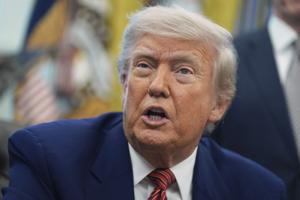
President Donald Trump announced a significant trade agreement with Vietnam on Wednesday, a move that allows U.S. goods to enter the Southeast Asian nation duty-free. In contrast, Vietnamese exports to the United States will be subject to a 20% levy. The announcement was made via Trump’s Truth Social platform, highlighting a strategic shift in trade dynamics between the two countries.
The trade deal marks a pivotal moment in U.S.-Vietnam relations, aiming to bolster American exports while recalibrating the economic balance. This agreement is expected to open new markets for American manufacturers and producers, potentially leading to increased economic activity and job creation within the United States.
Context and Background
The announcement comes amid ongoing global trade tensions and a complex geopolitical landscape. Historically, Vietnam has been a growing trade partner for the United States, with bilateral trade reaching new heights over the past decade. This new deal is seen as an effort to strengthen economic ties while addressing trade imbalances.
Vietnam has been part of the U.S.’s broader strategy to diversify its trade partnerships in Asia, especially as relations with China have become increasingly strained. The country has positioned itself as a key player in the region, attracting foreign investments and expanding its manufacturing base.
Expert Opinions and Economic Implications
According to trade analysts, the duty-free access for U.S. goods could significantly boost American exports, particularly in sectors such as agriculture, technology, and consumer goods. “This deal provides a substantial opportunity for U.S. businesses to tap into Vietnam’s growing market,” said Dr. Emily Tran, an expert in international trade policy.
“By allowing U.S. goods to enter duty-free, Vietnam is signaling its commitment to a balanced trade relationship,” Dr. Tran added.
However, the 20% levy on Vietnamese exports to the U.S. has raised concerns among some economists who fear it could lead to increased costs for American consumers. The move could also prompt Vietnam to seek alternative markets or renegotiate terms in the future.
Historical Parallels and Future Prospects
This development follows a series of trade negotiations that have reshaped U.S. economic engagements in Asia. Comparisons are being drawn to past trade deals, such as the Trans-Pacific Partnership (TPP), which aimed to enhance trade relations across the Pacific Rim before the U.S. withdrawal in 2017.
Looking ahead, the new trade agreement with Vietnam could set a precedent for future negotiations with other Asian countries. It reflects a strategic pivot towards strengthening alliances in the region, potentially influencing global trade patterns.
Conclusion and Next Steps
As the trade deal takes effect, both countries will be closely monitoring its impact on their respective economies. The U.S. aims to capitalize on the duty-free access to boost its export sectors, while Vietnam will need to navigate the challenges posed by the new levy on its goods.
Further discussions are expected to refine the terms and address any emerging issues. The ongoing dialogue between the two nations underscores the importance of maintaining a balanced and mutually beneficial trade relationship.
In the broader context, this agreement is a testament to the evolving nature of international trade, where strategic partnerships and economic diplomacy play crucial roles in shaping the global economic landscape.






